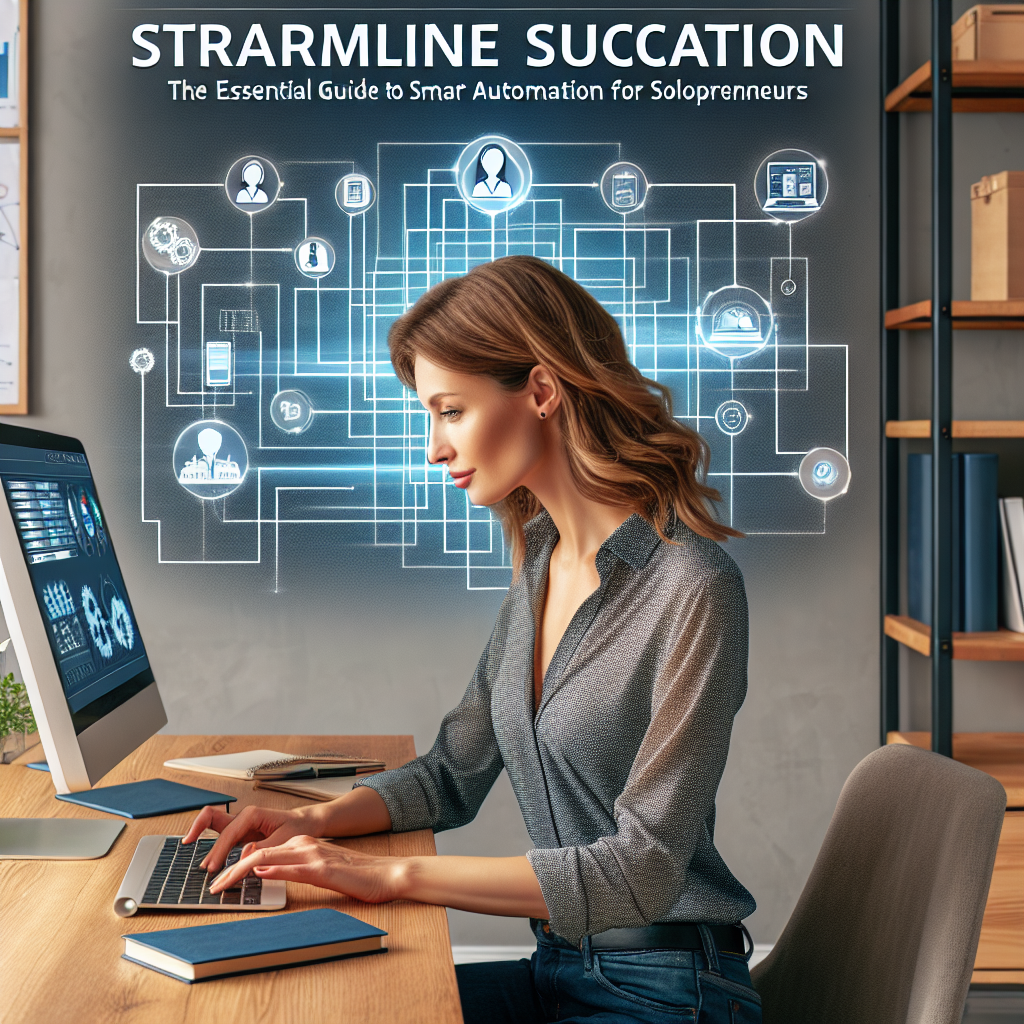In today’s fast-paced digital landscape, solopreneurs face the challenge of managing various aspects of their business on their own. From marketing to client management, handling everything efficiently can become overwhelming. Smart automation offers a solution to streamline processes, enhance productivity, and ultimately foster growth. This guide delves into the various ways solopreneurs can utilize automation for greater success.
Understanding Smart Automation
What is Smart Automation?
Smart automation refers to the use of technology and software to carry out tasks and processes that would traditionally require human intervention. It simplifies workflows, reduces the likelihood of errors, and frees up time for more strategic activities.
Benefits of Automation for Solopreneurs
- Time Savings: Automating repetitive tasks allows solopreneurs to focus on core activities that drive revenue.
- Increased Efficiency: Streamlined processes lead to quicker turnaround times and enhanced customer satisfaction.
- Cost-effectiveness: Reduced labor costs and minimized human error can result in significant financial savings.
- Scalability: Automated systems can easily adapt to increased demands without the need for additional resources.
Identifying Automation Opportunities
Areas for Automation
-
Customer Relationship Management (CRM): Implement CRM systems to track customer interactions, manage leads, and follow up automatically.
-
Email Marketing: Use platforms like Mailchimp or ConvertKit to automate email communications, segment audiences, and engage effectively.
-
Social Media Management: Tools such as Buffer and Hootsuite allow scheduling of posts, monitoring engagement, and analyzing performance without constant manual input.
-
Accounting and Invoicing: Solutions like QuickBooks and FreshBooks automate invoicing, expense tracking, and financial reporting.
-
Project Management: Tools like Trello and Asana facilitate task management, collaboration, and progress tracking automatically.
Choosing the Right Tools
Criteria for Selecting Automation Tools
- Usability: Ensure the tool is user-friendly and fits seamlessly into your existing workflow.
- Integration: Look for tools that integrate with other software you use to avoid data silos.
- Scalability: Choose tools that can grow with your business needs.
- Support and Community: A strong support network and community can guide you in optimizing the tool’s usage.
Recommended Tools for Solopreneurs
- Zapier: Connects different apps to automate workflows without coding.
- Calendly: Simplifies scheduling meetings by automating calendar bookings.
- Slack: Extends team communication through automated posts and reminders.
- Canva: Automates design processes with templates for consistent branding.
Implementing Automation Strategies
Step-by-Step Approach
- Evaluate Current Workflows: Identify repetitive tasks that consume your time.
- Set Clear Objectives: Define what outcomes you want to achieve through automation.
- Choose the Right Tools: Select tools that align with your identified needs.
- Test and Optimize: Implement automation on a small scale and monitor performance before full rollout.
- Review Regularly: Continually assess and adjust your automation strategies to align with changing business needs.
Best Practices for Successful Automation
- Start Small: Focus on automating minor tasks before taking on more complex processes.
- Keep User Experience in Mind: Ensure that automation does not hinder customer interactions. Personal touches can still be important.
- Invest in Training: Understand how to maximize the tools you adopt with adequate training and resources.
- Monitor and Adapt: Regularly analyze data to identify any hurdles in current automation processes.
Overcoming Challenges in Automation
Common Hurdles
- Resistance to Change: Some may be reluctant to adopt new technologies. It’s essential to communicate the benefits clearly.
- Initial Costs: Some tools may have upfront costs, so budgeting is essential.
- Technical Issues: Be prepared for technical challenges; conducting regular maintenance can mitigate this.
Solutions
- Education: Provide resources and training to ease the transition.
- Pilot Programs: Test tools in small teams or projects to demonstrate their effectiveness.
- Seek Expert Help: If needed, hire a consultant for optimizing and implementing automation strategies.
Conclusion
Smart automation is not just a trend; it’s a vital aspect of modern business management, especially for solopreneurs. By understanding and leveraging automated tools, solopreneurs can enhance their efficiency, reduce costs, and focus on what truly matters—growing their business. Embracing automation opens the door to a future where success is streamlined and achievable.





